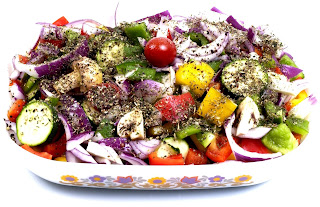After a pleasant walk, especially on a nice Autumn day, it can be so nice to come back home, kick off your walking shoes, put the kettle on and then enjoy a sit down with your favourite hot beverage and a delicious low carb almond and orange biscuit … If you'd like to make some, please continue reading!
Ingredients:
Makes 16 biscuitsIngredients:
2 Medjool dates, stoned and finely chopped
50g butter, softened
400g ground almonds
1 tsp baking powder
2 tsp vanilla extract
1½ tsp almond extract
Zest of an orange, finely grated
3 egg whites, loosely beaten
15 walnuts, halved or flaked almonds to decorate
Method:
1. Heat the oven to 350 F/ 180 C / Gas 4. Melt the dates in 3 tbsp. hot water in a small bowl, 'bashing' them to a puree with a fork.
2. Push the puree through a fine sieve to get rid of the skins. Blitz with the remaining ingredients (not the walnuts) in a food processor.
3. Roll the mixture into walnut-sized balls and place on a greased baking tray.
4. Flatten them gently into circles about 4cm across. Push walnuts into the top of each.
5. Bake for 10 minutes, or until golden-brown. Remove from the oven and allow to cool for 5 minutes.
Note:
They can be stored in an air-tight container for 3 days or 5 days in the fridge.
Nutrition per serving:
Carbohydrates 3.7g : Protein 10g : Fat 20g : Fibre 2.7g
From original recipe seen here
If you are just starting a low carb diet/lifestyle you may feel confused with which low carb flours to use. You may never have used any of them before and how to use them properly can be daunting. Low carb flours do not behave like wheat flour.
For example, Ground Almonds/Almond Meal... it is made slightly different than almond flour. Instead of blanching the almonds to remove the skins, the skins on the almonds are kept on. It’s a little bit coarser than almond flour and still bakes the same. For baked goods, perhaps use a super fine ground almond flour but equally almond meal can perform just as well in most recipes, at a reduced cost.
Almond meal may also be known as ground almonds. You can grind almonds using a blender to make your own almond meal, the power of your blender will dictate how fine your almond meal will become.
A serving (1/4 cup or 28 grams) of the almond meal has the same nutrition of almond flour of nearly 160 calories, 6 grams of carbs and 3 grams of fibre. Only 6 total carbs or 3 net carbs per serving.
You can learn more about low carb flours from Libby at 'Ditch The Carbs' site, she has a very good guide, which you can read here
Autumn … one of my most favourite seasons
All the best Jan





























